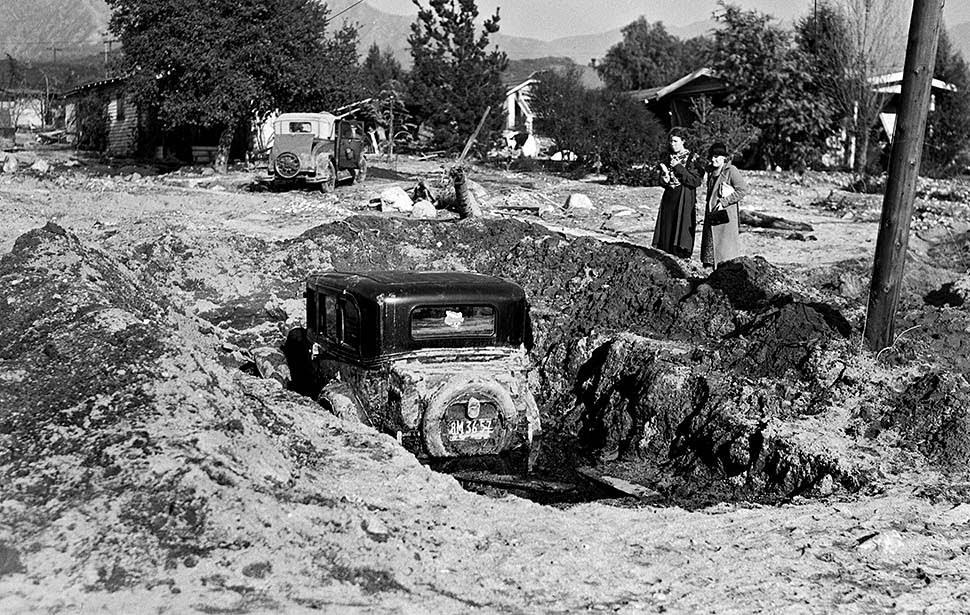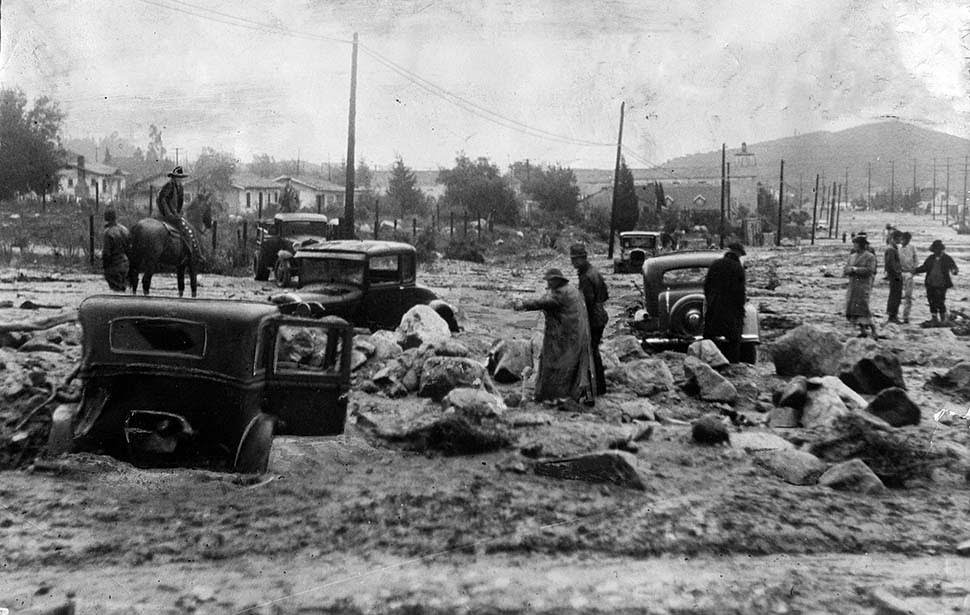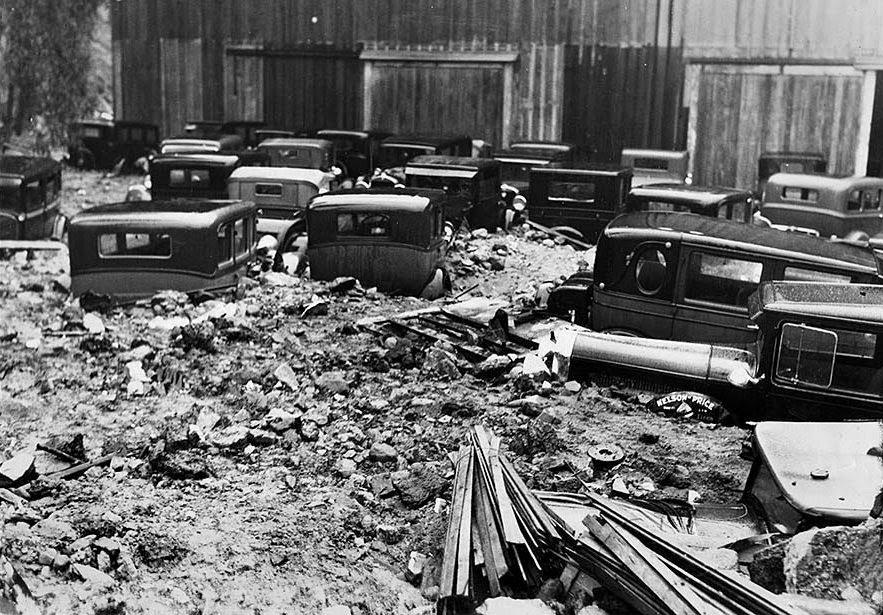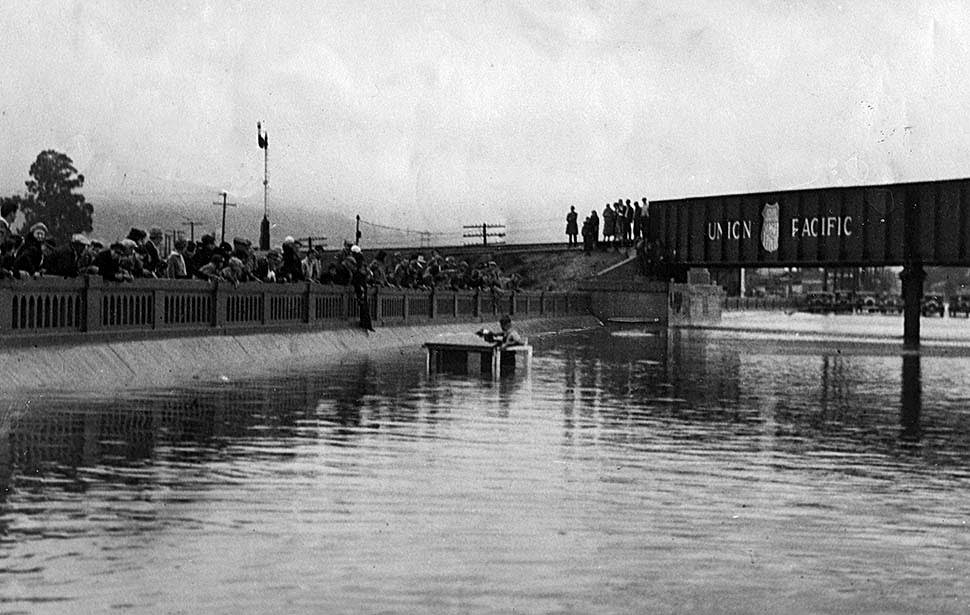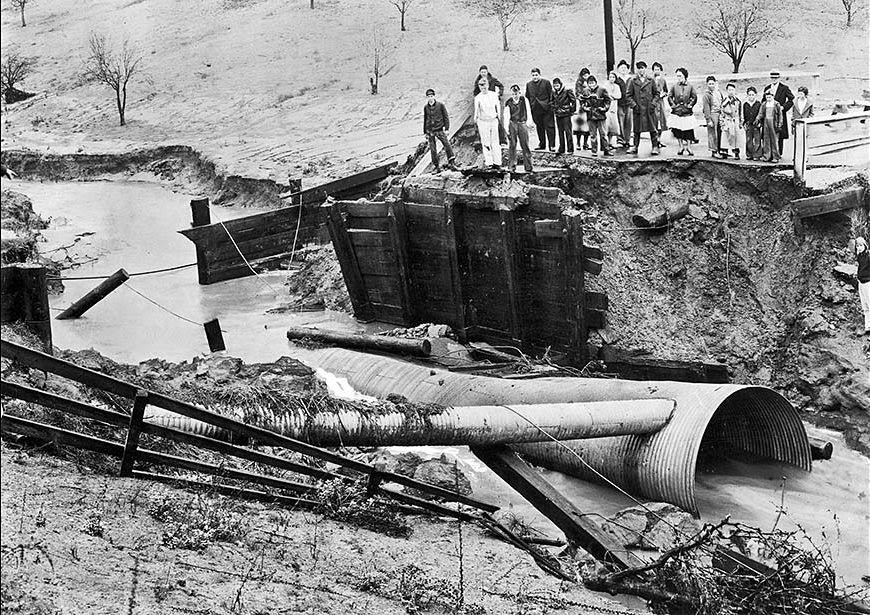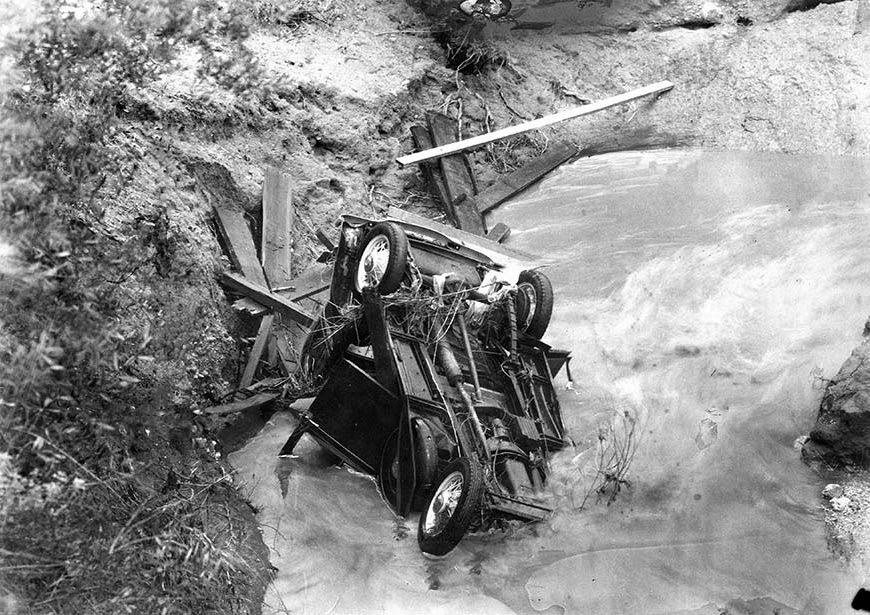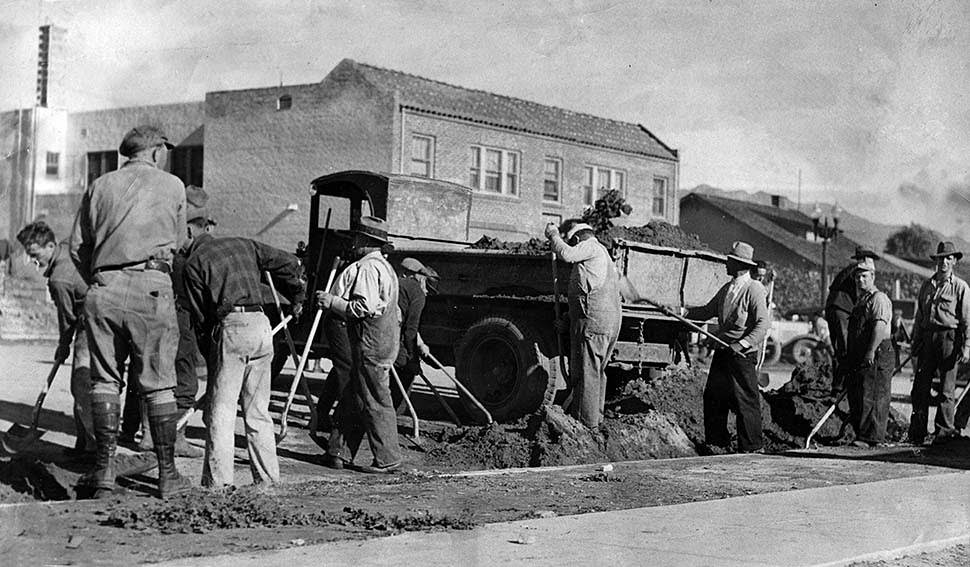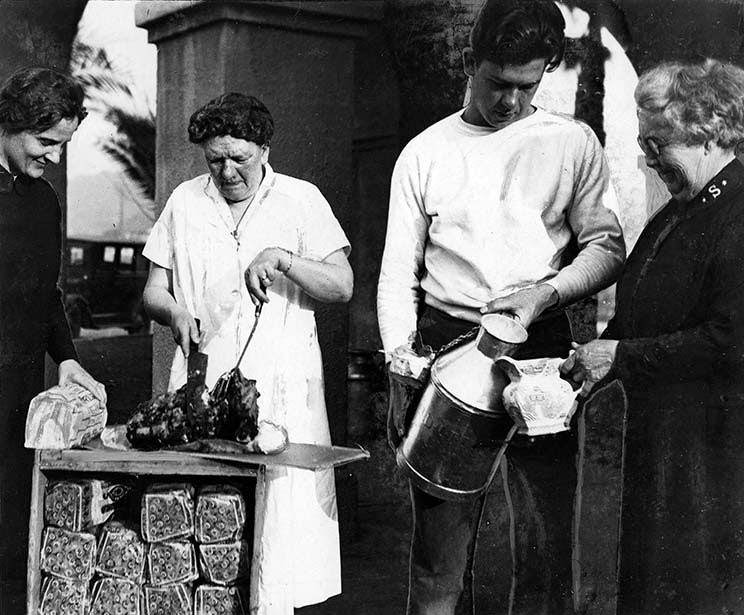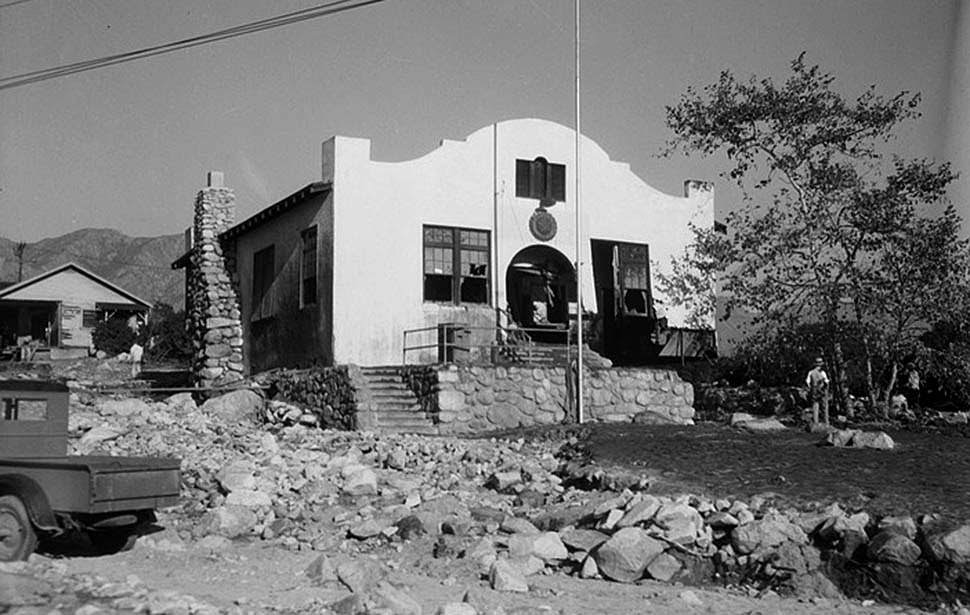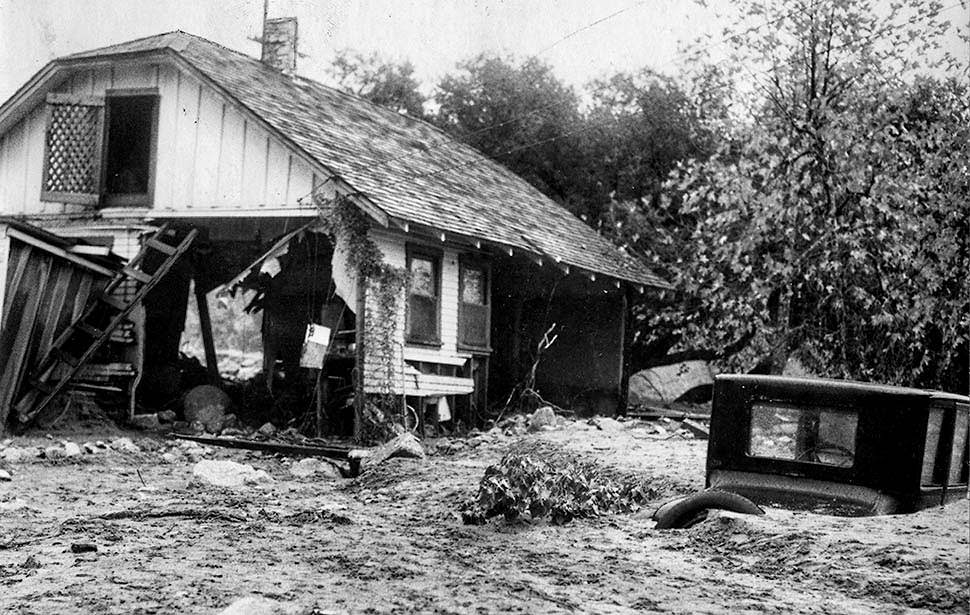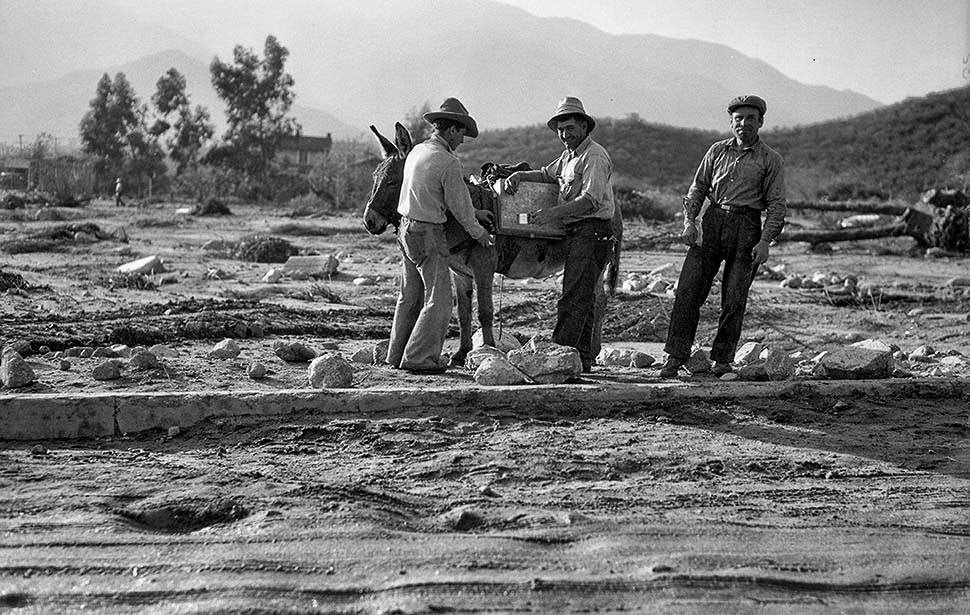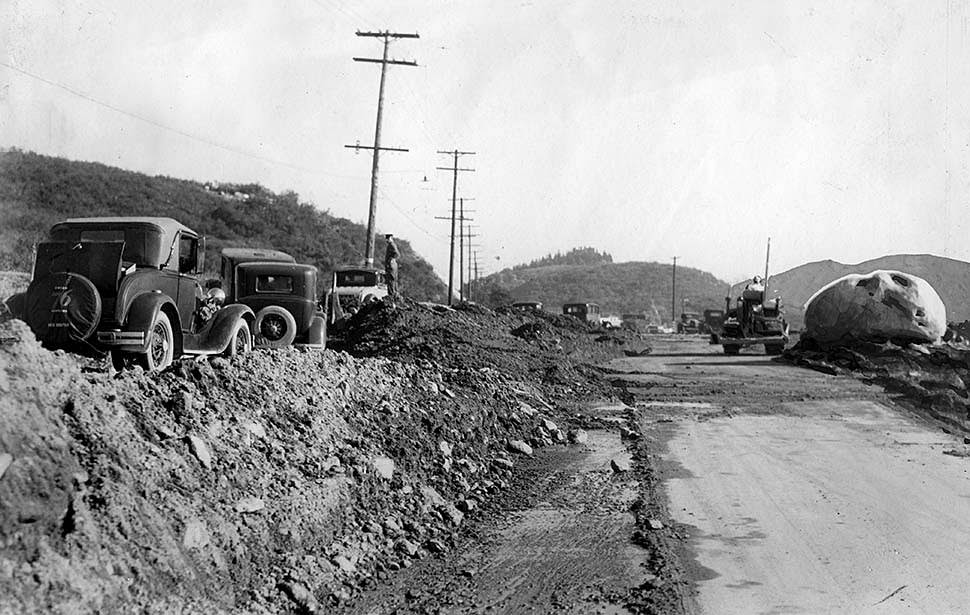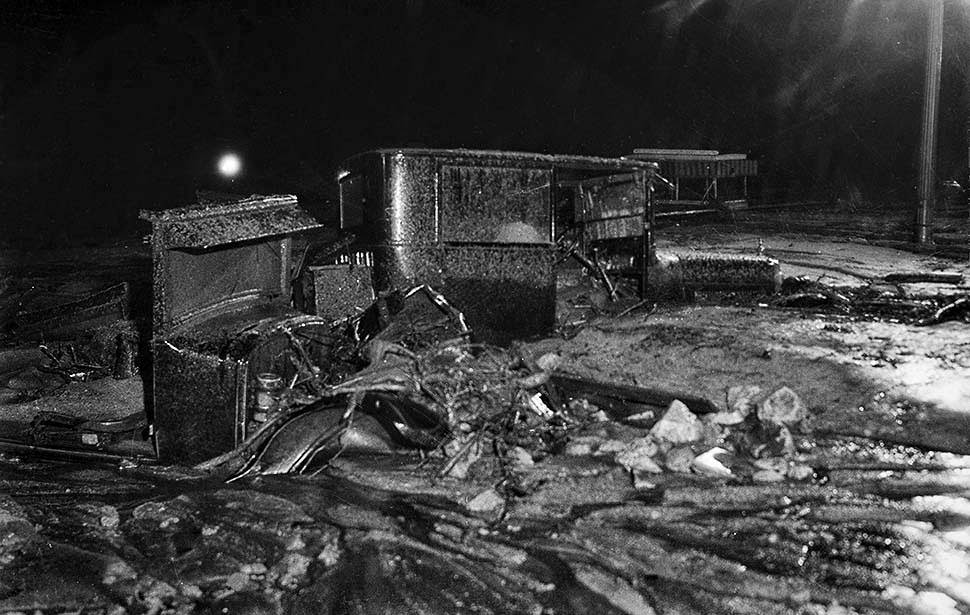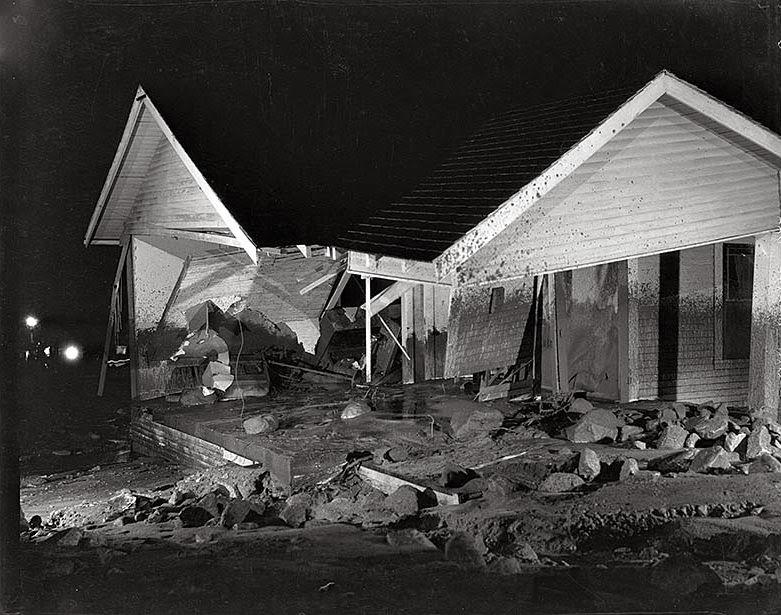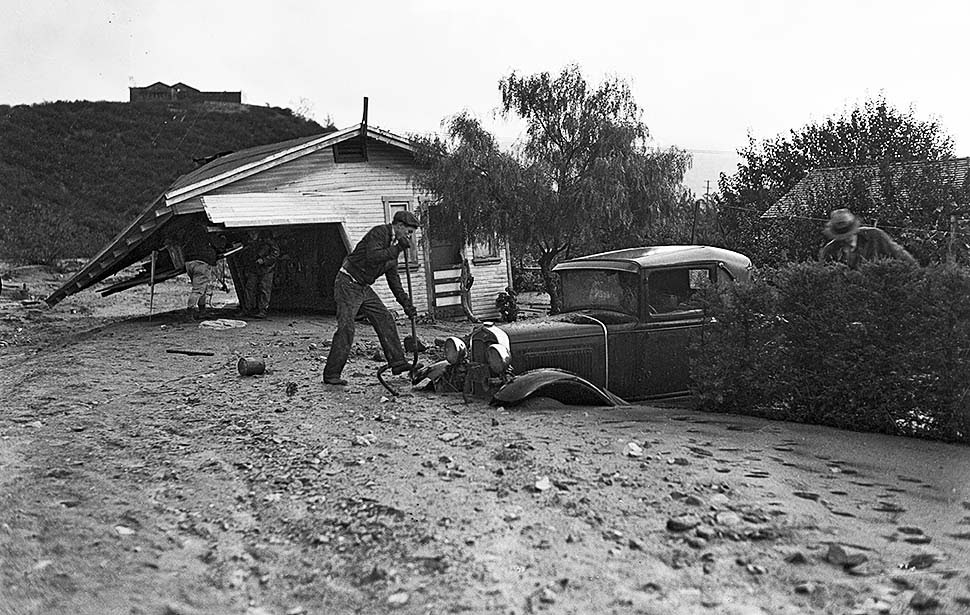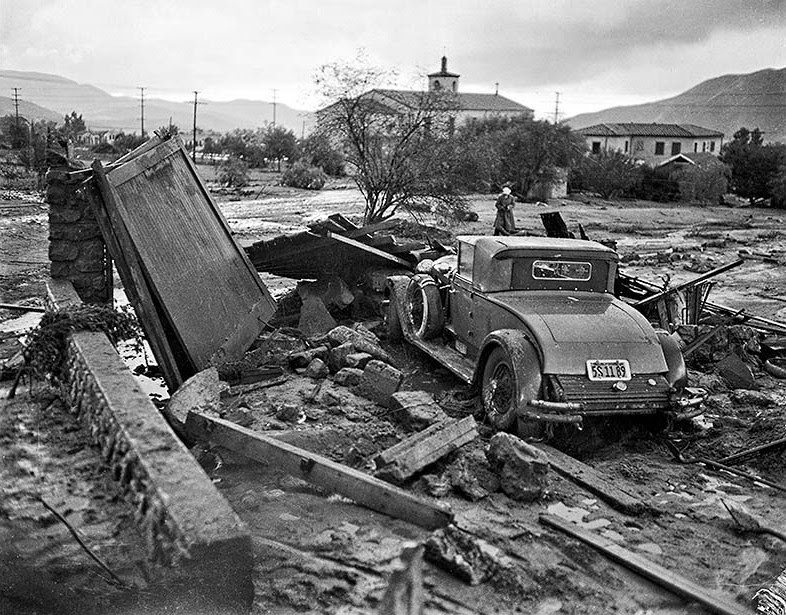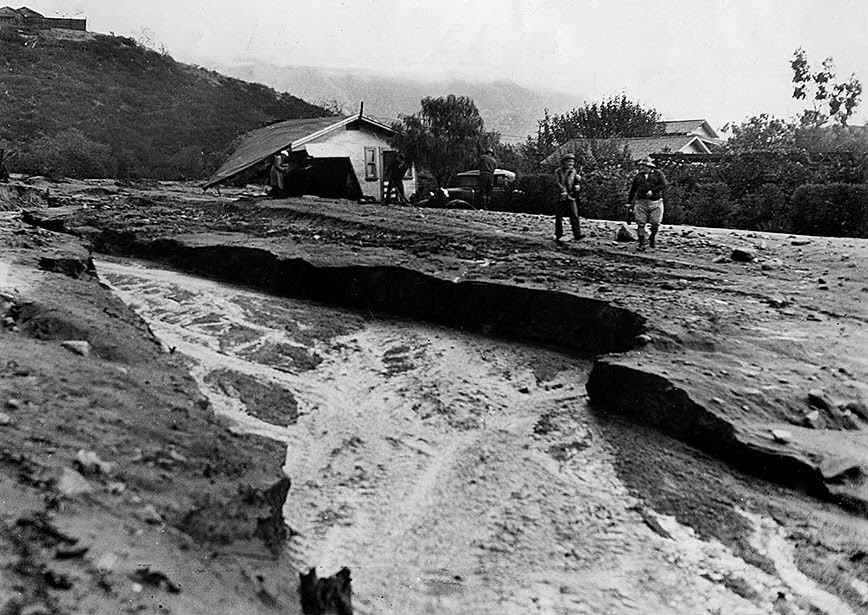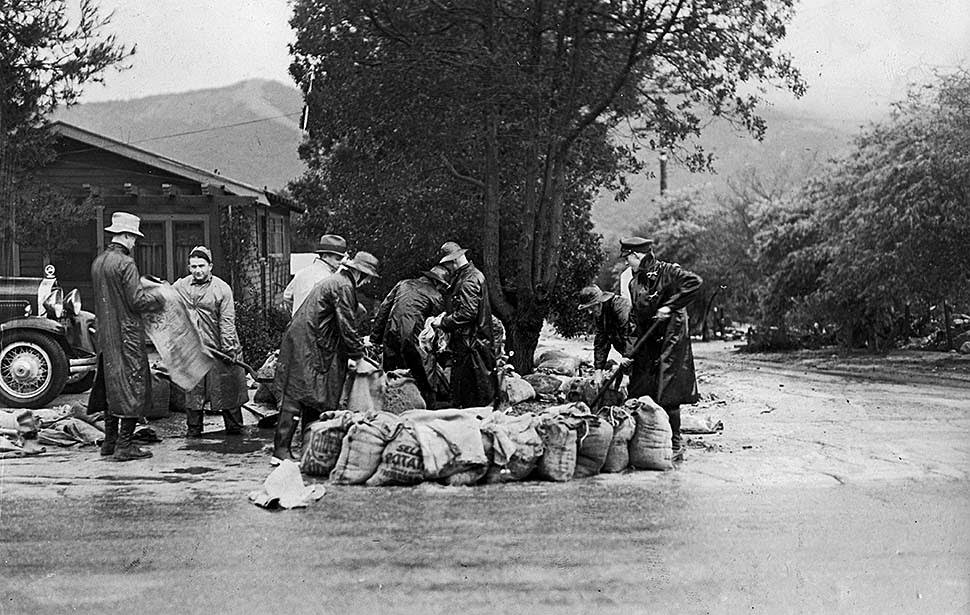Wildfires raged across the nearby Los Angeles Mountains in November 1933, destroying La Crescenta, La Canada, and Montrose. In December of that year, a series of winter storms dumped 12 inches of rain on the mountainside. New Year’s Eve saw sporadic flooding due to more heavy rains. Several mountain ridges collapsed around midnight, dumping millions of tons of mud and debris into the Crescenta Valley neighborhoods below. More than 400 homes were destroyed in La Cañada, La Crescenta, Montrose and Tujunga. Hundreds of people were left homeless. There was widespread devastation. Mudslides that began in the mountains above La Cañada and La Crescenta left a path of destruction that extended all the way to the Verdugo Wash.
There was a local American Legion Hall that seemed like a safe place to wait out the night. Unfortunately for the sixteen people inside, the hall’s location placed it directly in the path of oncoming debris flow from nearby Pickens Canyon. Deluge ripped the building open, filling it with mud that engulfed everyone inside before continuing its merciless rampage. Residents of Montrose also sought shelter at American Airlines Legion Post 288, which was destroyed, killing 12. Foothill Boulevard was buried under 12 feet (4 m) of mud, boulders, and debris. The mud was deep enough to bury cars completely on Montrose Avenue. Many miles of Honolulu Boulevard were inundated by sand and silt. Two notable victims of the flood were identical twins from the silent era, Winston and Weston Doty, who died when they were 19 years old.
Here are some historical photos of the 1934 Flood in Los Angeles that show the devastation and the aftermath of the flood.
Also, check the Los Angeles flood of 1938.


